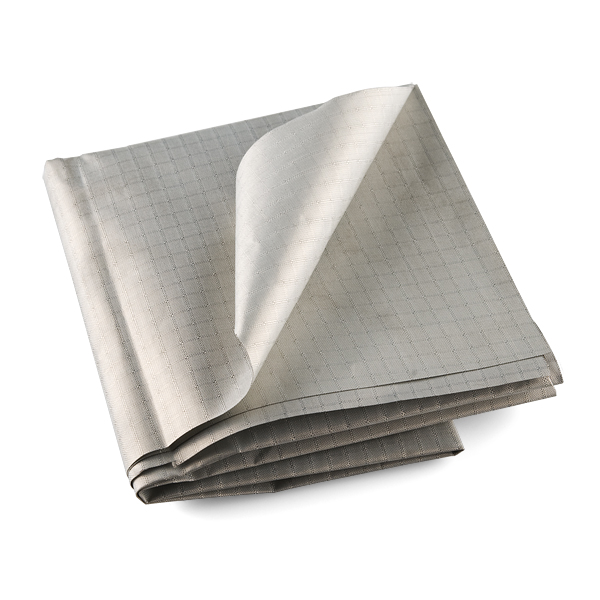Learn more about the journal and the submission process. A conductive textile is a fabric which can conduct electricity.
Conductive textiles can be made with metal strands woven into the construction of the textile or by conductive yarns which are conductive thanks to a metal-coating. The resistance of a particular fabric depends on what conductor is used and how it is made.
This is a method of creating your own conductive fabric from fusible fibers that will compliment your design project. I was sent some thread samples that were unable to be used in a sewing machine or by hand sewing. Conductive fabric is a fabulous product for eTextile design, but it is not always aesthetically pleasing.
Woven Conductive Fabric. These are available in both a basic plain weave (PW) which is strong and durable, and a rip stop weave (RS) that is reinforced to resist tearing. Metals used are Silver (Ag), Copper (Cu), Nickel (Ni) and Tin (Sn) in various combinations.
Base fabric materials include cotton, wool, polyester, and nylon. There are two main categories of conductive fibers according to the Conductive Fiber Manufacturers Council.
This is with a strong Ferric Chloride solution at room temperature. There are currently available fabrics and fabric materials of different types coated in metal. The line permits the values of electrical conductivity from 1milliohms squared and up, to be obtained. Use small pieces for soft switches, plush keypads, capacitive touch sensors, and other textile interfaces.
This highly conductive fabric has a resistance of less than ohm per foot in any direction across the textile. Great for use with FLORA. It’s mainly used in projects where a soft, flexible, and sometimes washable circuit is needed.
It’s also great for creating low profile switches in projects where manufactured and hard conductive materials are not appropriate. Copper conductive fabric s are available with 0. The petals in the flower motif are pieces of conductive fabric that serve as contacts for the electrified tassel in the center of each flower. When the blanket is thrown over an object, the tassel.
The fabric -reinforced gaskets originate from the combination of an electrically conductive fabric that wraps a core in expanded polyurethane, neoprene or silicone. These gaskets are furnished with double-sided adhesive mounting tape.
The standard geometries are those represented in the figure. Shielding with conductive fabric This type of shielding is offered as a solution for more modest requirements yet is still valid as a response to market demands. Another category of conductive textiles is based on using conductive polymers or, more precisely, intrinsic conductive organic polymers (ICPs).
Fortunately, many polymers are inherently conductive. These include polyacetylene, polypyrrole, and polyaniline. IT IS Silver-Plated Nylon That is Stretchy in both Directions.
Our company is a well-known Manufacturer and Supplier of Conductive Fabric from Pune, Maharashtra. The Conductive Fabric we present is fabricated using high-quality materials and advanced equipment.
Customers from all over the country applaud our fabric for its sturdy design and its durable nature. Customers can rely on us for handling bulk orders of Conductive Fabric and ensuring their timely delivery across India. A light weight, durable conductive fabric.

Our conductive fabrics offer the highest standard of performance in shielding and conductivity. Starting with tough, light, tightly woven fabrics found in applications such as ship sails and military parachutes, the proprietary metalizing process is used to apply a thin layer of metal to each fiber. TEAR-RESISTANT - This Aerospace Material is used for years to shield aircraft cabins. Washable at temperatures under degrees.
Thinner than paper and tear-resistant as tarpaulin. We also supply industry manufacturers.
Nessun commento:
Posta un commento
Nota. Solo i membri di questo blog possono postare un commento.